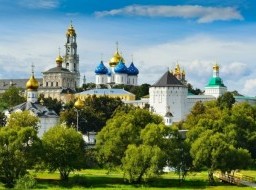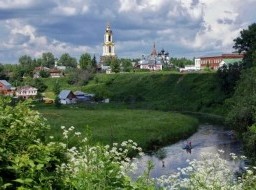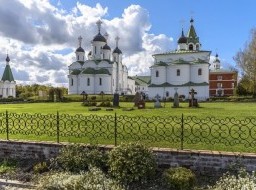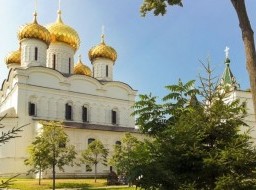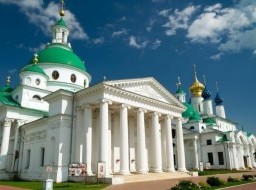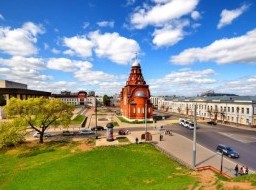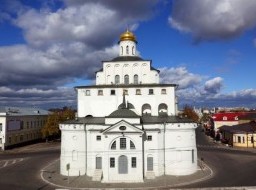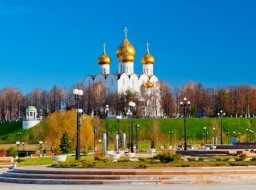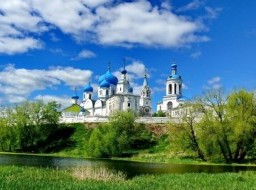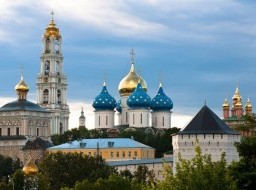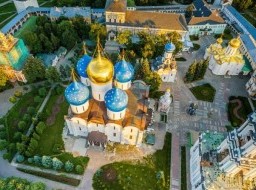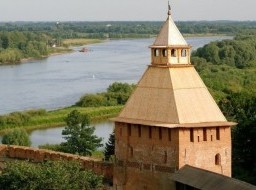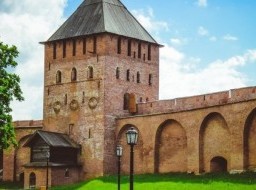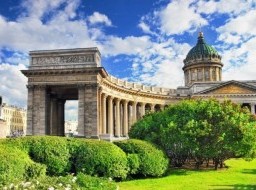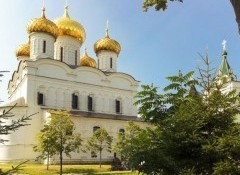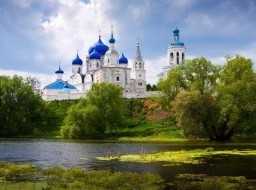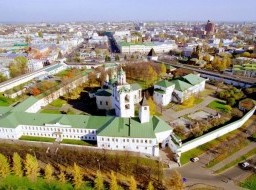The Church of the Transfiguration of the Saviour in Ilin Street is one of the oldest and most respected churches in the city of Veliky Novgorod. It was founded very long ago. According to legend, the holy Novgorod icon of Our Lady of the Sign, which protected Suzdal citizens in 1169, was kept in this Church.
In 1374, the Church's wooden building was rebuilt in stone. The construction was funded by the Uliches and the new church was solemnly consecrated by Archpriest Alexy, assisted by the clergy of Saint Sophia Cathedral. It was further proof of just how important the Church was to life in Novgorod.
The Church of the Transfiguration is a typical example of 14th-century Novgorod architecture. It is of substantial size, with an especially emphasized high dominating structure, and its energy of mass and volume movements, which are combined with richly decorated facades.
It is a small, single-dome church with walls adorned by various small arches, niches, belts, figured window frames, and embedded intricate crosses. These crosses were put into the church walls during construction by citizens who had kept their vows or wanted to give thanks for a miracle.
The Church's painting, which survived in only few fragments, is the only monumental work by the great Byzantine artist Theophanes the Greek. It was made in 1378 with support from Boyar Vasily Danilovich. The dome and light drum frescoes have been well preserved. These include colossal images of the Pantocrator, who angrily looks at the Earth, archangels and seraphims, who protect his altar, and figures of forefathers and prophets.
The paintings of St. Trinity side chapel, which was used as a customer's personal prayer house, are also of great interest. The centre is occupied by the Old Testament Trinity. Next to it are the Service of Saint Fathers and the Our Lady of the Sign.
The Greek artist's frescoes are notable for their severe spirituality. They have nothing touching, soft, or pleasing. The artist endowed the Saints' images with strong feelings exceeding human capabilities.
The monumental paintings of the Transfiguration Church were hidden under whitewash and a coat of paint for hundreds of years. The 20th century, when advanced methods of scientific restoration were developed, breathed new life into the works of art.

